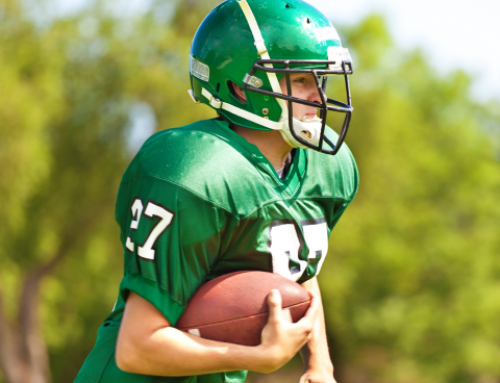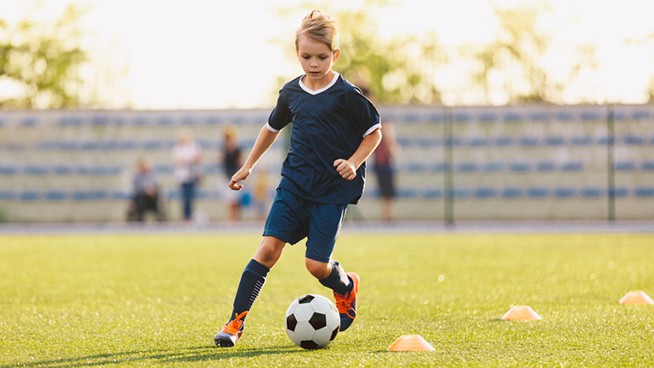How to Return to the Field After an ACL Injury
Surgery and rehabilitation after an anterior cruciate ligament (ACL) injury can be a long, stressful process. It takes most professional athletes almost a year to return to their sport. However, dedicated rehab after ACL surgery can help athletes return even stronger than before the injury. (Read STACK’s guide to ACL injuries.)
Follow these tips to make your journey from surgery back to the field as easy and painless as possible.
Tip 1
Make sure that your physical therapist (PT) specializes in your sport. A PT who understands your sport knows the exact method for strengthening your leg to perform all the maneuvers you need to return to play. For example, a soccer specialist knows the right time and the safest progression for returning a striker to shooting a ball.
To find a list of Board Certified Sports Clinical Specialists (SCS) in your area, check the American Physical Therapy Association’s directory here.
Tip 2
Because the ACL has a lot of nerve endings, specialized balance training (called “proprioception”) is an important part of rehab as an adjunct to strengthening. After a tear, the knee has to relearn the position sense and coordination that those nerve endings once provided. Proprioception should be a part of every rehab session, starting from the first day that weight bearing is allowed and continuing through the sport-specific phase. The activities should begin with simple balance exercises, like standing on one leg, and progress to perturbation training exercises, like balancing on an unstable surface. (Learn more about balance training.)
Tip 3
Core, hamstring and hip strengthening should also be a part of every rehabilitation session. Weakness in these muscles has been found to put athletes at risk for re-injury. To lower this risk, athletes should not return to play until they have regained optimal strength in these muscles. Common exercises to begin with include Isometric Leg Curls and Extensions, Leg Presses and Physioball Squats. Once sufficient strength is attained, traditional exercises like Squats and Deadlifts can be performed.
Tip 4
Rehab should emphasize strengthening and regaining control of both the injured and the non-injured leg. The odds of tearing the ACL in the opposite leg are high. Making sure both knees are as strong as possible can reduce the risk of a second injury or surgery.
Tip 5
The last part of ACL rehab should consist of return-to-sport drills, such as cutting, planting on the knee and agility drills. It should also involve jump training on both legs. Jumping and landing training has been found to reduce the risk of ACL re-injury.
When cleared by your physician, use the following progression to return to your sport. Spend one to two weeks at each level. Remember to take frequent rest breaks. Sub out every five to 10 minutes to prevent fatigue-induced injury.
- Light, non-contact drills with your team—e.g., foot skills or long-ball drills in soccer, or lay-up drills in basketball
- Small-sided games—e.g., 4v4 or 8v8 small soccer scrimmages, or half-court basketball scrimmages
- Full scrimmages in practice (make sure you spend a full two weeks at this level before transitioning to a game or match)
- Competition
RECOMMENDED FOR YOU
MOST POPULAR
How to Return to the Field After an ACL Injury
Surgery and rehabilitation after an anterior cruciate ligament (ACL) injury can be a long, stressful process. It takes most professional athletes almost a year to return to their sport. However, dedicated rehab after ACL surgery can help athletes return even stronger than before the injury. (Read STACK’s guide to ACL injuries.)
Follow these tips to make your journey from surgery back to the field as easy and painless as possible.
Tip 1
Make sure that your physical therapist (PT) specializes in your sport. A PT who understands your sport knows the exact method for strengthening your leg to perform all the maneuvers you need to return to play. For example, a soccer specialist knows the right time and the safest progression for returning a striker to shooting a ball.
To find a list of Board Certified Sports Clinical Specialists (SCS) in your area, check the American Physical Therapy Association’s directory here.
Tip 2
Because the ACL has a lot of nerve endings, specialized balance training (called “proprioception”) is an important part of rehab as an adjunct to strengthening. After a tear, the knee has to relearn the position sense and coordination that those nerve endings once provided. Proprioception should be a part of every rehab session, starting from the first day that weight bearing is allowed and continuing through the sport-specific phase. The activities should begin with simple balance exercises, like standing on one leg, and progress to perturbation training exercises, like balancing on an unstable surface. (Learn more about balance training.)
Tip 3
Core, hamstring and hip strengthening should also be a part of every rehabilitation session. Weakness in these muscles has been found to put athletes at risk for re-injury. To lower this risk, athletes should not return to play until they have regained optimal strength in these muscles. Common exercises to begin with include Isometric Leg Curls and Extensions, Leg Presses and Physioball Squats. Once sufficient strength is attained, traditional exercises like Squats and Deadlifts can be performed.
Tip 4
Rehab should emphasize strengthening and regaining control of both the injured and the non-injured leg. The odds of tearing the ACL in the opposite leg are high. Making sure both knees are as strong as possible can reduce the risk of a second injury or surgery.
Tip 5
The last part of ACL rehab should consist of return-to-sport drills, such as cutting, planting on the knee and agility drills. It should also involve jump training on both legs. Jumping and landing training has been found to reduce the risk of ACL re-injury.
When cleared by your physician, use the following progression to return to your sport. Spend one to two weeks at each level. Remember to take frequent rest breaks. Sub out every five to 10 minutes to prevent fatigue-induced injury.
- Light, non-contact drills with your team—e.g., foot skills or long-ball drills in soccer, or lay-up drills in basketball
- Small-sided games—e.g., 4v4 or 8v8 small soccer scrimmages, or half-court basketball scrimmages
- Full scrimmages in practice (make sure you spend a full two weeks at this level before transitioning to a game or match)
- Competition












